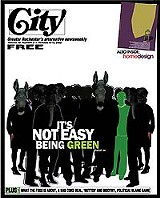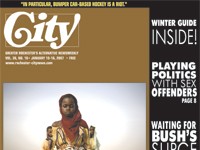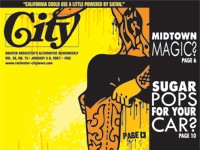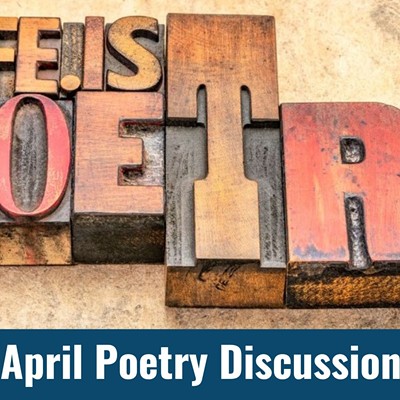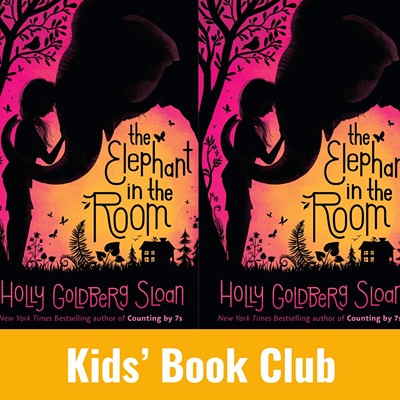[
{
"name": "500x250 Ad",
"insertPoint": "5",
"component": "15667920",
"parentWrapperClass": "",
"requiredCountToDisplay": "1"
}
]
The Green Party's presence in New York politics has been established by an unlikely pair of founding fathers: nationally known and respected consumer advocate Ralph Nader and Al Lewis, the comic television actor who gained fame as the geriatric vampire Grampa Munster.
Now the party's future in the Empire State rests squarely on the broad shoulders of a former steelworker and union organizer from the Bronx: this year's Green Party gubernatorial candidate, Stanley Aronowitz. If the Green Party is to maintain its status as an officially recognized political party in New York --- a designation that's key to any third party's ability to survive and thrive here --- Aronowitz and his lieutenant gubernatorial candidate, Jennifer Daniels, must receive at least 50,000 votes in this November's elections.
Despite the Greens' unprecedented level of success both nationally and in New York State, that's anything but guaranteed. And if Aronowitz fails to attract at least 50,000 voters, the party's efforts to become a relevant part of New York's political landscape will take a major hit.
Nader's two relatively high-profile presidential campaigns put the Green Party on the political map. In 1996, the Green Party presidential ticket got nearly 76,000 votes in New York --- 3,200 from voters in Monroe County. In 2000, the Nader-topped ticket received over 244,000 votes statewide --- 11,520 of which came from Monroe County voters.
But it was Lewis's 1998 gubernatorial run that gave the Greens a real foothold in the state. Lewis and his aptly named running mate, Alice Green, managed to attract 52,533 voters that year (2,568 in Monroe County), enough to secure a Green Party line on this year's ballot and give the party the official recognition that makes party-building activities easier to conduct.
Unlike Nader and Lewis, Aronowitz is hardly a household name. A sociology professor at the City University of New York, Aronowitz has written 15 books on such subjects as the corporatization of higher education and the history of the labor movement. Perhaps not surprisingly, he's yet to top the bestseller list.
There are several other factors that make Aronowitz's candidacy an uphill struggle. Chief among them are money and a lack of media attention. But the party's political inexperience, nearly all-volunteer staff, and internal divisions also gum up the Green political machine.
Does Aronowitz expect to win the election? "No, of course not," he says. "I think that's part of the bullshit." The bullshit, in this case, being Aronowitz's contention that the three most prominent candidates --- Governor George Pataki, Comptroller Carl McCall, and Rochester-area billionaire Tom Golisano --- aren't really debating matters of genuine importance.
"The issues that are urgent for the people of this state are never really debated," Aronowitz says. "I think part of the reason for that is that [the candidates] have converged, and what they do is attack each other in a rather, I think, juvenile way --- about misstatements or statements they might have made, or missteps or character. Because in the last analysis, they don't have anything different. There are small differences, but they're not, genuinely, differences that can excite voters."
The Green Party's platform certainly includes issues that generate excited debate, if not outrage and indignation. It includes a call to close the state's nuclear power plants, ban genetically engineered food, abolish the death penalty, decriminalize marijuana and other drugs, make the minimum wage at least $10 per hour, institute universal health care, and change the way the electoral system itself works by publicly financing campaigns and other measures.
"What the Green Party is doing, and continues to do, is to raise issues," Aronowitz says, "to meet people, to get them aware, to get them registered to vote, to get them to actually vote for a genuine alternative."
Getting the media --- and, by extension, the public --- to pay attention to the Greens' issues is Aronowitz's primary motivation, but he's also running because "we need 50,000 votes," he says. Without that total, the Greens lose their ballot line for 2006 and a good deal of the political momentum the party has generated so far.
As the Greens see it, their lack of money and media exposure go hand-in-hand, in part due to some underhanded and unethical journalistic practices.
The party as a whole, which is also running candidates for attorney general and comptroller at the state level, "will probably spend maybe $30,000 in this election," says state party chair Mark Dunlea. Dunlea hopes Aronowitz will be able to raise as much as $100,000 through his own efforts, but he says the two major party candidates and Golisano "are spending that a day in television ads."
On October 3, about a month before the election, Dunlea said the party probably had about $5,000 in its bank account. By contrast, Pataki's campaign finance filings indicate he had $12.2 million in his war chest in early October, and had already spent $27.4 million on the election. McCall's campaign, which has spent $11 million, reported having $1.1 million in the bank. Golisano's self-financed campaign had blown through nearly $40 million by early October. The billionaire has said he's prepared to commit as much as $75 million of his own money to this year's run.
In the absence of paid advertising, the Greens must rely on media coverage to get their message to the voters. But "in order to get media coverage, you have to be provocative," Dunlea says. In the Greens' experience, that's meant provoking laughter, anger, or the prurient interests of the electorate.
Dunlea recounts a conversation he had with Lewis about the 1998 campaign. Alice Green, Lewis' running mate, "'stands up there at a press conference and she'll give statistic after statistic after statistic and fact after fact in response to a question, and the reporters will write nothing,'" Dunlea recalls Lewis remarking.
"'Then they ask me, "What should we do about toxic waste?" And I'll go into my old man lunatic routine and start cacklin' and scream that what we should do is get a big spoon and make all the CEOs eat their toxic waste. You know the next day we'll get three paragraphs about "Al Lewis wants to feed toxic waste to the CEOs." The people we need to reach, that's the only way they'll hear us, and they'll understand what I meant by feeding toxic waste to CEOs.'"
Perhaps.
As a Green candidate, Dunlea says, "You're put in this dilemma: Do I act off-the-wall in order for the media to pay attention to me? But then the only thing the general public hears is when I'm acting off-the-wall. Then they'll say, 'Why should I vote for this guy? He seems so off-the-wall.' That's a big, big problem for Green Party and third-party candidates."
The biggest splash Aronowitz has made in the mainstream media thus far came after he admitted that he --- like McCall's running mate, businessman Dennis Mehiel --- has fathered children out of wedlock. The admission made up two or three minutes of an hour-long press conference that covered a wide range of issues, but Aronowitz's revelation about his sex life was the only aspect of the event that got significant play in the media.
"Stan's 58 minutes talking about tax policy and the environment and universal health care, all of that got ignored. Because now the media had their sort-of sexy hook for the day," Dunlea says.
Aronowitz, Dunlea, and others in the party also say the mainstream media ignores them in part because the Greens don't buy ads.
When the editors and news directors of mainstream media outlets are deciding which candidates to cover, the amount of advertising the candidates buy "isn't the only criteria, but it's definitely a criteria," Dunlea says. "There are campaigns I've been involved in where we've had money to spend on advertising, and it's pretty clear usually that if you buy some ads, you also expect to get some free media coverage out of it as well --- sort of a quid pro quo."
The media coverage Golisano has gotten is a case in point, the Greens say. "There's not a reporter in the world who could argue with me in a straight face that they're covering Tom Golisano because of the brilliancy of his political ideas," says Dunlea. "The only criteria is that he has billions of dollars and is willing to spend $50 to $100 million" on his campaign.
Local Greens are particularly angry with the lack of coverage Aronowitz and the other statewide Green candidates have gotten in the Democrat and Chronicle. James Bailey, the Green Party's campaign coordinator in Monroe County, says press releases on Green Party campaign events and positions are routinely ignored by Rochester's daily paper.
D&C political reporter Joseph Spector did not return a call seeking comment. Editor Karen Magnuson deferred comment to Tom Flynn, the paper's vice president of communications.
Flynn says the D&C sent Aronowitz and the Greens' other statewide candidates requests for biographical information and their stands on various issues several weeks ago, but has not received a response. He says two calls Spector made to Aronowitz's office were also not returned.
What's really gotten Bailey and Rochester Greens riled up is the D&C's stance on gubernatorial debates. "There also has been some silly-season talk about including all eight gubernatorial candidates --- among them the Marijuana Reform Party and Socialist Workers Party standard-bearers --- in the debates," reads a September 20 D&C editorial. "That would make things very unwieldy. Independence Party candidate Tom Golisano deserves a spot, along with McCall and the governor. That's it."
"I am appalled by your narrow definition of 'democracy' and your concern that too much democracy is unwieldy," wrote Richard Freeman of Rochester, in an unpublished letter to the editor posted on the Green Party of Monroe County's website. "[D]emocracy is unwieldy and the more you try to make it 'wieldy' the more fascistic is gets... And what makes Golisano worthy and not, say, Stanley Aronowitz of the Green Party? Because Golisano can buy his way to media attention? Is this democracy?"
"You might ask, 'Why Golisano?'" says Bailey, "until you look into the Sunday paper and you see those full-page ads."
Flynn says the Greens' contention that the paper trades coverage for ad revenue is "ridiculous."
Regarding the fact Aronowitz has made that charge, Flynn says, "this from a candidate who can't even respond to inquiries by a newspaper for information. You can only have a dialogue if two people are talking."
As for the D&C'sSeptember 20 editorial, it's only an opinion, Flynn says. "Editorials and news coverage are quite separate and distinct," he says. "Take it for what it's worth."
Asked about his experience with the D&C, Aronowitz says, "I've had the experience of not being covered by them much."
"The Buffalo News and the Democrat and Chronicle have done scribbles, but not real stories," he says. "I've been profiled by The New York Times, I've gotten into the Post Standard in Syracuse, and so on. But the Rochester papers and the Buffalo papers --- the dailies with the big media presence --- they have shut us out. They have taken the position --- I'm not saying that this is what they say --- that we will not advertise, we don't have the clout to win; ergo, there's no need to cover us."
A search of the D&C's online news archive illustrates the Greens' point. As of October 6, a search for articles containing the name "Golisano" brought up 17 articles going back to September 24, 11 of which were directly related to his campaign. A search for "Aronowitz" did not bring up a single story for the same time period. (It should be noted that the D&C's online archives do not necessarily include every reference to a candidate that appears in the print version of the paper.)
The D&C's online archive isn't the only place you'll be hard-pressed to find Green candidates. Ballots for seats representing Rochester in the state legislature will be practically Green-free this November.
In part, that reflects a conscious decision on the party's part to concentrate on Aronowitz's gubernatorial run. But it's also indicative of the Greens' lack of experienced, local candidates, and their hesitation to challenge Democrats whose political agendas are similar to their own.
Green candidate Bonnie Cannan's name will appear on ballots for the 56th State Senate District seat representing part of Rochester, Greece, Brighton, and Parma. But, essentially, she's not in the running.
According to Bailey, Cannan volunteered to challenge Assemblyman Joe Robach when Robach, a former Democrat, switched parties to run in the newly redrawn State Senate district as a Republican. But since the lawyer and progressive activist Harry Bronson entered the race for the Democrats, Cannan has decided not to actively pursue the seat, Bailey says.
Cannan, who ran unsuccessfully for city council last year, did not return a call seeking comment.
Green Party member Thera Clark tried to mount a campaign challenging incumbent Democrat Susan John for the 131st Assembly District, but was undone by her own lack of political experience and a legal challenge by county Democrats that disqualified her from the race.
Clark, a first-time candidate, needed the petition signatures of 18 registered Greens to get on the ballot. Conventional political wisdom suggests that candidates gather as many as twice the number of signatures required in order to withstand challenges to the signatures' validity by opponents or boards of election. Clark only got 20 signatures.
Compounding that problem, Clark says, Monroe County Board of Elections officials were confused as to what race she was trying to enter. The Board eventually certified her signatures, but the Monroe County Democratic Committee challenged the Board's decision in court and won.
"I really was surprised at the extent [the Democratic Committee] took it," Clark says. "I was running for office to draw attention to an issue, not so much against Susan John." The issue at stake is the state's failure to fund the processing of rape kits, which contain DNA and other evidence collected after a sexual assault. That information can be processed into a national database to help identify and apprehend offenders. But lacking funds to do so, police often fail to do that.
John has been active on the issue, but Clark believes the assemblywoman hasn't done enough. (She says she's willing to work with John on the issue, and will continue her own efforts on its behalf.)
Why would the Democrats spend time and money to disqualify a single-issue, long-shot challenger like Clark? "The party was just concerned about making sure everybody followed the same set of rules," John says.
Local Greens have more of a presence in this year's Congressional races, where they're fielding candidates in two of the four races for seats representing parts of Monroe County. Attorney and Green activist Paul Fallon is challenging incumbent Republican Tom Reynolds for the 26th district seat, and Rachel Treichler is challenging Republican Amo Houghton for the District 29 seat.
Like Aronowitz, Treichler is realistic about her chances for victory. "I am running to raise the issues," she says, among them the potential to develop wind power in the district, which encompasses much of the southern half of Monroe County and several rural counties in the southern tier.
"We can talk about winning at different levels," Treichler, a first-time candidate, says. "With the Greens, at this stage, winning would be to significantly build awareness of Greens in the district and enroll voters toward the goal of winning a future election."
"There's a great potential for the Green Party to become a significant force in Rochester politics," she says.
"Locally, the party has moved out of its infancy," says Rochester activist and Green Party member Jon Greenbaum. "You might say it's in its teenage years."
You might also observe that, like teenagers, the Greens can be headstrong, contentious, and cliquey in self-defeating ways. Granted, Republicans and Democrats often exhibit the same adolescent tendencies, but the Green Party has some unique characteristics that exacerbate the problem.
"One of the challenges within the Greens is that, basically, the Greens become the catch-all for all progressive groups, and so there are people within the Greens who have different political [views]," Dunlea says. "There are the anarchists, the Marxists, there are the sort-of Green capitalists, there are the progressive populists [Dunlea considers himself one of those], there are ecologists, there are women's [issues] activists. It sometimes can be difficult fitting all those different political strategies together."
"We get people who are very good at asserting their rights," Greenbaum says. "A statewide Green assembly is always a rowdy exercise in democracy."
Dunlea speaks of tensions within the party between "Realos" and "Fundies." The Realos, he says, are the pragmatically minded Greens who'll often tone down their rhetoric or amend their ideas to make them more palatable to the electorate. The Fundies, on the other hand, are more dismissive of the electoral process as a means to create change. They believe their job is "to bring in ideas which initially are dismissed as being too radical, and then, over time, convince people of their merit and basically force the major parties to adopt them," Dunlea says.
In recent years, this philosophical split has played out nationally as the split between the Fundie-minded Green Party USA and the Green Party of the United States, which is the Greens' national political party. Though Dunlea says many of the differences between the two organizations have been resolved, another source of inter-party tension is ready to take its place.
This tension comes from a seemingly unlikely source: Ralph Nader. Specifically, many Greens, especially Fundies, are upset that Nader distances his citizen-activist groups from the Green Party's efforts.
For example, in a widely circulated October 3 e-mail, Mitchel Cohen --- a member of both the New York State Green Party and Green Party USA --- criticized the organizers of Nader's Democracy Rising group for inviting Democrats such as unsuccessful New York City mayoral candidate Mark Green to an October 4 rally on Wall Street. Cohen also criticized the organizers for failing to mention Aronowitz's appearance at the rally.
As one of the co-founders of the New York Public Interest Research Group and the first chairperson of the national PIRG, Dunlea says he's considered "part of the Nader family." He acknowledges there are tensions between Nader and the Greens these days.
Although he considers Nader "a genius," Dunlea says "he's not an organizer [and] he's not good on political strategy" --- shortcomings he says Nader himself would readily admit. Democracy Rising couldn't promote Aronowitz's appearance, says Dunlea, who also helped organize the event, because it's funded by sources that can't directly support partisan activities.
"Ralph just can't take his 30 or 40 different citizens' groups and turn them into fronts for the Green Party," Dunlea says.
Of course, whether the Green Party activists who worked to get Nader on the 2000 presidential ballot in 35 states can appreciate that fact is another matter.
Will the Greens ever become a force to be reckoned with in New York politics?
Aronowitz is heartened by what he's seen so far. "Four years ago, we had 15 locals in New York State," he says. "Now we have 60." With the exception of the D&C and some media outlets in New York City, Aronowitz says he's also getting more serious attention from the press than Lewis did. And he's found a particularly receptive audience among the state's college students and other young, disaffected voters.
Aronowitz also believes the growing possibility of war with Iraq will increase the Greens' stature. If, as he suspects, Congress gives President George W. Bush sweeping powers to initiate such a war, "we're going to be the one party standing out there and saying, 'These guys [Congressional Democrats and Republicans] are selling you out.' That may help us, both in the general election and in getting much more public visibility."
But the one factor Aronowitz thinks will really propel the Greens to prominence is a turn of events no one can take heart in: the gradual destruction of the planet's ecosystem.
"We are in the middle of an environmental catastrophe," he says. "Global warming used to be thought of as a cumulative process. Global warming is not a cumulative process. It's about the destabilization of our ecosystem. The destabilization of our ecosystem means that at any time, just like a war like Iraq, the ecosystem can produce tremendous disruptions in our everyday life."
Aronowitz notes that Greens in Central Europe gained political capital in Germany and elsewhere after the region experienced destructive floods. "If we have those kinds of catastrophes, the Greens' response, and the fact that the Greens have a position and have been warning all along, will have some effect on [the party's] standing in votes, as well as in the public eye. The problem is, lacking such a catastrophe, it's long, slow work."
In other words, people who say there'll be a Green governor in New York when hell freezes over just may be exactly right.
Speaking of Green Party, Stanley Aronowitz
-

THE WEEK AHEAD: Events for the Week of March 20
Mar 20, 2017 -

Beyond Clinton and Trump
Oct 5, 2016 -

Alex White wants to run for mayor
Feb 11, 2013 - More »
Latest in Featured story
More by Chris Busby
-
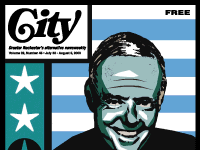
Chasing Amo
Jul 30, 2003 -
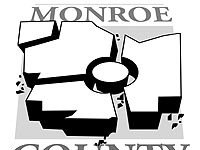
Pucker up, piggie
Jul 9, 2003 -

Alan's angels
Jul 9, 2003 - More »
